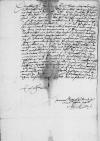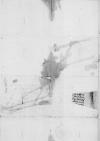Den edlen(n), ernfesth(en) h(ern) Georg von Kunheim (*1480 – †1543), trusted counsellor of Duke Albrecht; in ducal service at least since 1526; 1528 ducal clerc in Tapiau; 1536 ducal commissioner for affairs of delimitation between Prussia and Masovia; at least in 1538-1543 captain (Hauptmann) of Tapiau; at least in 1539 counsellor of Duke Albrecht von Hohenzollern (HARTMANN 1525-1550, No. 29, 85, 436, 535, 611, 620, 630, 649, 899, 1053; BORAWSKA 1984, p. 286)⌊Jorg(en) von KunhaimGeorg von Kunheim (*1480 – †1543), trusted counsellor of Duke Albrecht; in ducal service at least since 1526; 1528 ducal clerc in Tapiau; 1536 ducal commissioner for affairs of delimitation between Prussia and Masovia; at least in 1538-1543 captain (Hauptmann) of Tapiau; at least in 1539 counsellor of Duke Albrecht von Hohenzollern (HARTMANN 1525-1550, No. 29, 85, 436, 535, 611, 620, 630, 649, 899, 1053; BORAWSKA 1984, p. 286)⌋, E(wer) F(urstlichen) H(erlichkei)t radt und houptman(n) zu Tapiau (Tapiawa), castle in Ducal Prussia, on the Pregel river, 38 km E of Königsberg, residence of the Prussian dukes, today Gvardeysk⌊TapiauTapiau (Tapiawa), castle in Ducal Prussia, on the Pregel river, 38 km E of Königsberg, residence of the Prussian dukes, today Gvardeysk⌋, hab ich in beywesen(n) des h(e)rn Achatius von Zehmen (Achacy Cema) (*ca. 1485 – †1565), 1517-1531 Chamberlain of Pomerania, 1531-1546 Castellan of Gdańsk (Danzig), 1545-1546 Voivode of Kulm (Chełmno), 1546-1565 Voivode of Marienburg (Malbork) (SBPN 1, p. 194-195; ORACKI 1984, p. 38-39; Urzędnicy 5/2, p. 198; PSB 4, p. 325-326)⌊danczker castellan(s)Achatius von Zehmen (Achacy Cema) (*ca. 1485 – †1565), 1517-1531 Chamberlain of Pomerania, 1531-1546 Castellan of Gdańsk (Danzig), 1545-1546 Voivode of Kulm (Chełmno), 1546-1565 Voivode of Marienburg (Malbork) (SBPN 1, p. 194-195; ORACKI 1984, p. 38-39; Urzędnicy 5/2, p. 198; PSB 4, p. 325-326)⌋ von(n) E(wer) F(urstlichen) D(urchlauch)t wegen(n) gern(n) gesehen(n) / und der hochwerstendigen(n) sorgfeldigheit halben(n), die E(wer) F(urstliche) D(urchlauch)t zu Sigismund I Jagiellon (Zygmunt I) (*1467 – †1548), King of Poland and Grand Duke of Lithuania (1506-1548); Duke of Głogów (Glogau) (1499-1506), Duke of Opava (1501-1506), Governor of Silesia (1504-1506); son of King Kazimierz IV Jagiellon and Elisabeth of Austria⌊ko(nigliche)r m(aieste)tSigismund I Jagiellon (Zygmunt I) (*1467 – †1548), King of Poland and Grand Duke of Lithuania (1506-1548); Duke of Głogów (Glogau) (1499-1506), Duke of Opava (1501-1506), Governor of Silesia (1504-1506); son of King Kazimierz IV Jagiellon and Elisabeth of Austria⌋, u(nserem) a(llergnedigsten) h(e)rn, / der Poland (Kingdom of Poland, Polonia)⌊CronPoland (Kingdom of Poland, Polonia)⌋ / und zu uns allen(n) / tregt, / vil lieber gehort / in dem, das vortrawter(r) weis E(wer) F(urstliche) D(urchlauch)t an mich und gedochten(n) h(e)rn castellan(n) hot lossen(n) gelangen(n), / daruff wir samptlich / hochdanckende E(wer) F(urstliche) D(urchlauch)t der zuvorsicht, die sie zu uns beiden(n) hath, / noch unserm(m) slechtem(m) vorstant / gemeltem written over n⌈nmm written over n⌉ h(e)rn von Georg von Kunheim (*1480 – †1543), trusted counsellor of Duke Albrecht; in ducal service at least since 1526; 1528 ducal clerc in Tapiau; 1536 ducal commissioner for affairs of delimitation between Prussia and Masovia; at least in 1538-1543 captain (Hauptmann) of Tapiau; at least in 1539 counsellor of Duke Albrecht von Hohenzollern (HARTMANN 1525-1550, No. 29, 85, 436, 535, 611, 620, 630, 649, 899, 1053; BORAWSKA 1984, p. 286)⌊KunhaimGeorg von Kunheim (*1480 – †1543), trusted counsellor of Duke Albrecht; in ducal service at least since 1526; 1528 ducal clerc in Tapiau; 1536 ducal commissioner for affairs of delimitation between Prussia and Masovia; at least in 1538-1543 captain (Hauptmann) of Tapiau; at least in 1539 counsellor of Duke Albrecht von Hohenzollern (HARTMANN 1525-1550, No. 29, 85, 436, 535, 611, 620, 630, 649, 899, 1053; BORAWSKA 1984, p. 286)⌋ / unser einfeltig bedencken(n) / an E(wer) F(urstliche) D(urchlauch)t zu tragen(n) haben(n) gebeten(n), / der nicht an sondren fleis / mit tifsyngrer ausredung / und geschicklicheit sich mit dem(m) h(e)rn castellan un(n)d mir, / was durch in an E(wer) F(urstliche) D(urchlauch)t gelangen(n) sol, / hot entslossen(n), / E(wer) F(urstliche) D(urchlauch)t noch irem furstlichen(n) hochem(m) vorstant / und der gnaden(n), die Got der almechtig E(wer) F(urstlichen) D(urchlauch)t D(urchlauch)t gegeben(n), / wirt sich in allem(m) wol wissen(n) zuentrichten(n). / Was mich belangt, / bleib ich im vorigen(n) erbitten(n) wie der, der E(wer) F(urstlichen) D(urchlauch)t freuntlich, / nuczlich und williglich zu dinen(n) gancz geflissen ist und begirig, / in der gunst [...] stain⌈[...][...] stain⌉ mich ouch vertraulich thue befelen(n).
 GStA PK, HBA, C1 No 631 3 unnumbered
GStA PK, HBA, C1 No 631 3 unnumbered  GStA PK, HBA, C1 No 631 1 unnumbered
GStA PK, HBA, C1 No 631 1 unnumbered 


